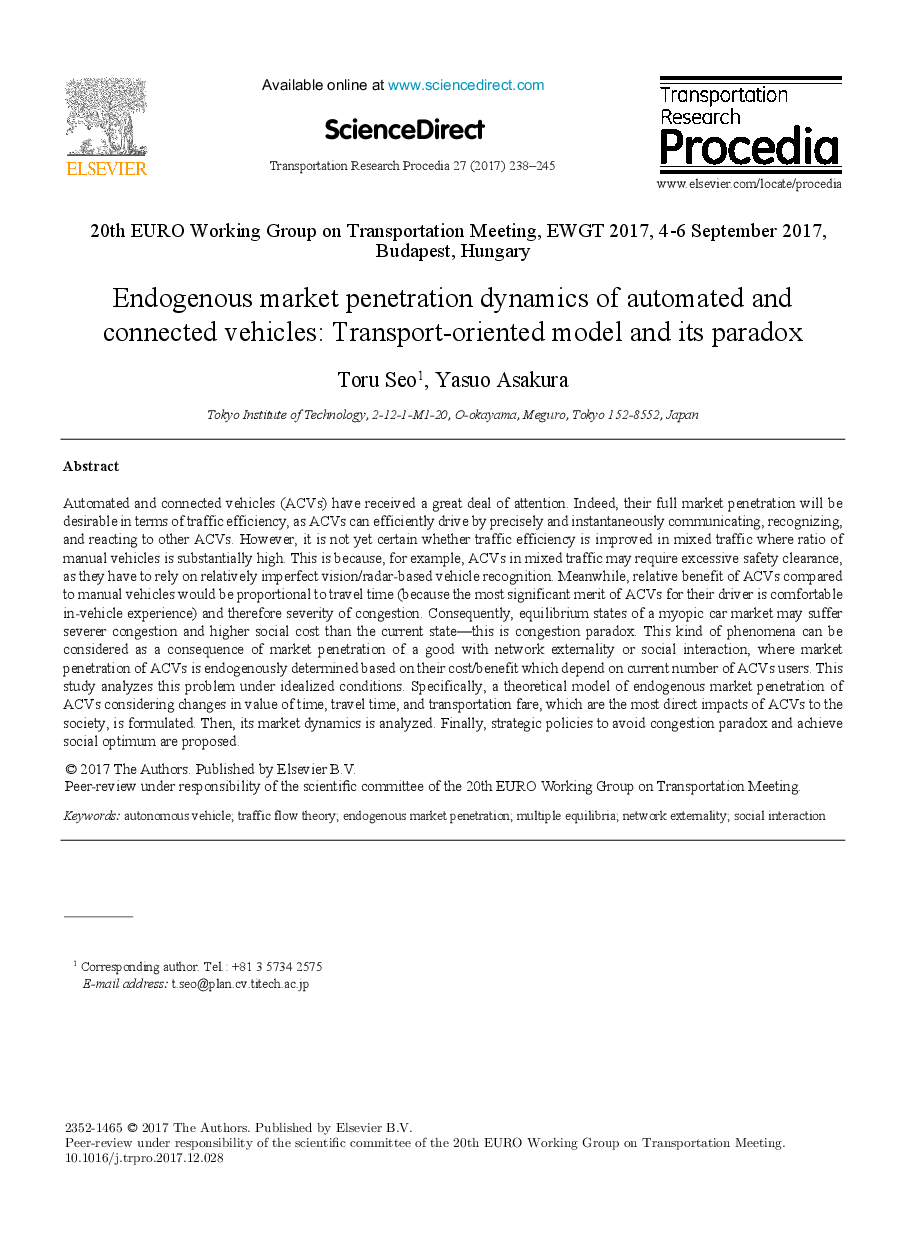ترجمه فارسی عنوان مقاله
پویایی نفوذ بازار درون خودرو از وسایل نقلیه خودکار و متصل: مدل حمل و نقل و پارادوکس آن
عنوان انگلیسی
Endogenous market penetration dynamics of automated and connected vehicles: Transport-oriented model and its paradox
| کد مقاله | سال انتشار | تعداد صفحات مقاله انگلیسی |
|---|---|---|
| 102822 | 2017 | 8 صفحه PDF |
منبع

Publisher : Elsevier - Science Direct (الزویر - ساینس دایرکت)
Journal : Transportation Research Procedia, Volume 27, 2017, Pages 238-245
ترجمه کلمات کلیدی
خودرو خودمختار، نظریه جریان ترافیک، نفوذ بازار داخلی، تعادل چندگانه، بیرون از شبکه، تعامل اجتماعی،
کلمات کلیدی انگلیسی
autonomous vehicle; traffic flow theory; endogenous market penetration; multiple equilibria; network externality; social interaction;

